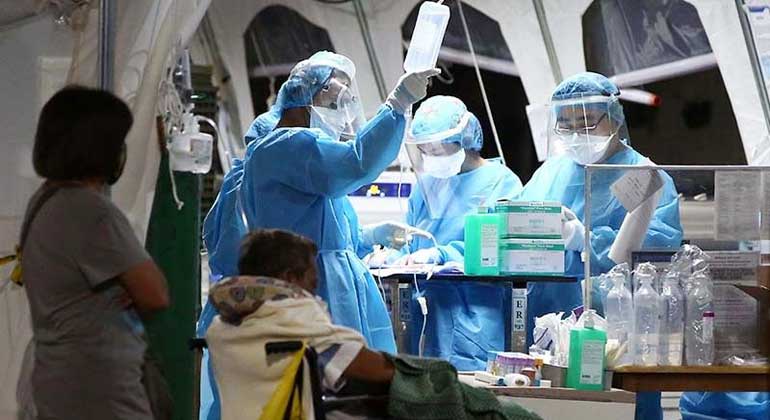
By Vann Marlo M. Villegas, Reporter
The Department of Health (DoH) reported 2,611 coronavirus infections on Friday, bringing the total to 316,678.
The death toll rose by 56 to 5,616, while recoveries increased by 416 to 254,617, it said in a bulletin.
There were 56,445 active cases, 87% of which were mild, 8.8% did not show symptoms, 1.3% were severe and 2.9% were critical.
Metro Manila reported the highest number of new cases with 1,084, followed by Cavite with 202, Iloilo with 182, Bulacan with 163 and Rizal with 132.
Of the new deaths, 22 came from Metro Manila, seven each from Central Visayas and the Calabarzon region, six from Central Luzon and four from the Bicol region.
Cagayan Valley, Western Visayas and Northern Mindanao reported two deaths each, while Zamboanga Peninsula, the Davao region, Soccsksargen and Caraga region reported one each.
More than 3.5 million people have been tested for the COVID-19 virus, it said.
Meanwhile, more than 300 Filipinos in Japan have been infected with the coronavirus, the Philippine Embassy in Tokyo said.
None of them are in a serious condition, Deputy Chief of Mission Robespierre L. Bolivar told an online news briefing on Friday.
The migrant Filipino workers were being treated in various hospitals in Japan and more were expected to be discharged soon, he said.
Mr. Bolivar said about 335,000 Filipinos live and work in Japan, about 57,000 of whom were overseas workers. A big percentage of them live there permanently.
About 35,000 Filipinos live in Tokyo, where the rate of infection is the highest in Japan, he said. Japan remains closed to tourists.
Also on Friday, DoH said coronavirus cases have been increasing due to the country’s expanded testing capacity. The capacity of the health system has also improved, Health Undersecretary Maria Rosario S. Vergeire told an online news briefing.
The Philippines ranked 20th among countries with the most cases, according to the Johns Hopkins University Coronavirus Resource Center.
But Ms. Vergeire said researchers should look at a country’s health system capacity, not just the number of cases, in evaluating its response.
She also said contact tracing efforts have become more efficient, with workers now required to complete tracing all contacts of a confirmed patient within 48 hours.
The Philippine recovery rate for the coronavirus was about 80%, while the death rate was at less than 2%.
Meanwhile, the government approved a program that provides dietary supplements to infants and pregnant women who are at-risk.
Presidential spokesman Harry L. Roque said the program will cover children aged six to 23 months and pregnant women who are nutritionally at risk. They will get the aid through cash or food packages, he said in a statement.
“This forms part of improving the healthcare of citizens and a means to eliminate hunger, which has been aggravated by the pandemic,” he added.
More than 7.6 million Filipino households went hungry at least once in the past three months, according to a September poll by the Social Weather Stations (SWS).
The hunger rate reached a record 30.7% or about 7.6 million families, exceeding the 23.8% in March 2012. It also rose by 9.8 points from 20.9% in July.
